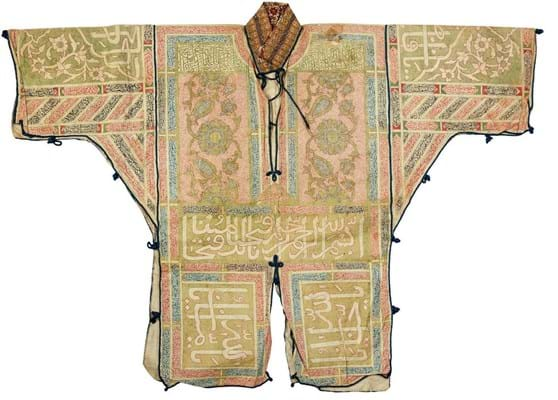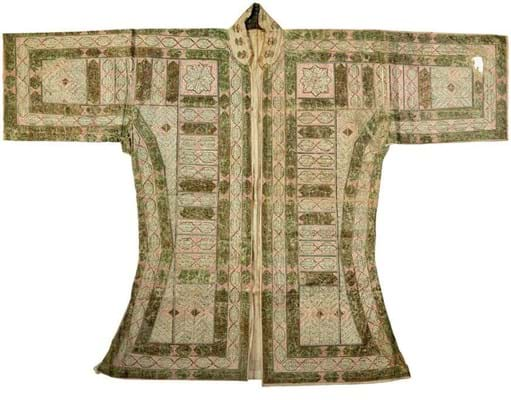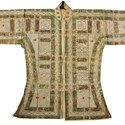The two garments offered on April 23, each decorated with panels of Qur’anic quotations, came for sale from a vendor whose family they had been with since the 19th century.
The earliest surviving Qur’an jama date from the middle of the Delhi Sultanate (1206- 1526), although the tradition of a shirt with protective powers might be much older. The prophet Joseph (Yusuf in Arabic) is believed to have owned one that restored the vision of his father Jacob (Ya‘qub), following the instruction: “Take this, my shirt, and cast it over the face of my father; he will become seeing.”
The spectacular 15th or 16th century jama included in the V&A’s Fabric of India exhibition in 2015 – conserved and on display for the first time since it was acquired by the museum in 1935 – was probably worn under armour during battle. However, others may have been made to protect the Muslim elite against such dangers as disease and difficult childbirth.
The two shirts offered in West Norwood as part of an Islamic week sale were relatively small in size – suitable for a youth rather than an adult – and thought to date from the 18th or early 19th centuries.
Typically fashioned from three pieces of cotton cloth stiffened with a size to provide a smooth surface for scribes and illuminators to work, they were covered with the entire text of the Qur’an, plus the asma-al-husna (99 names of God) and the Shahadah (the profession of faith).
The example written to front and back in red and black naskh script took £14,500 (estimate £1200-1500), while another penned in red and blue naskh and thuluth script brought £19,000 (estimate £800-1200). One lot went to a private collector in America and the other went to a London dealer.


















